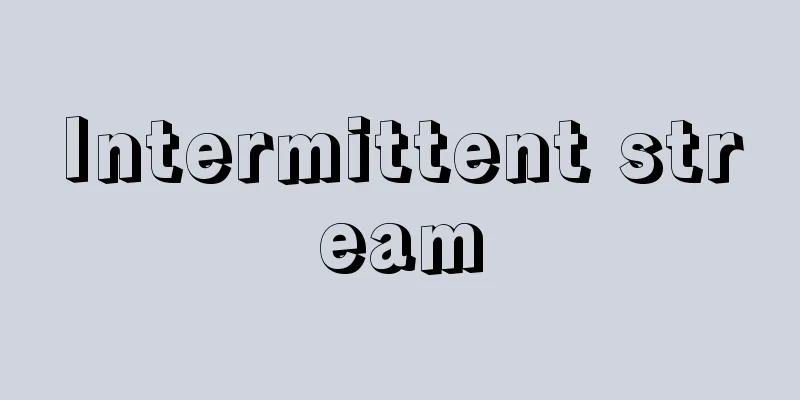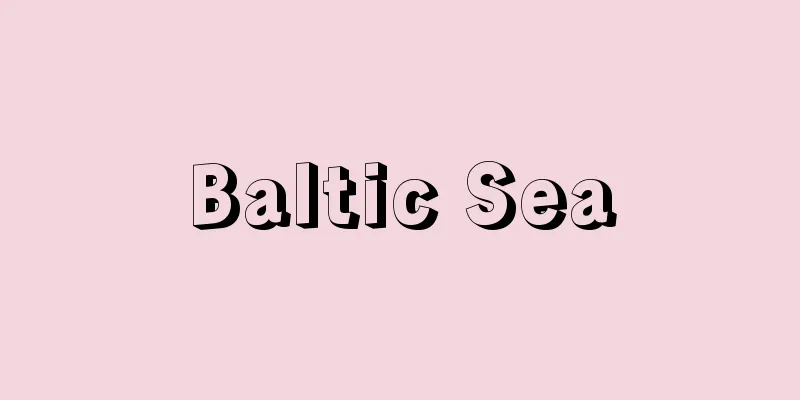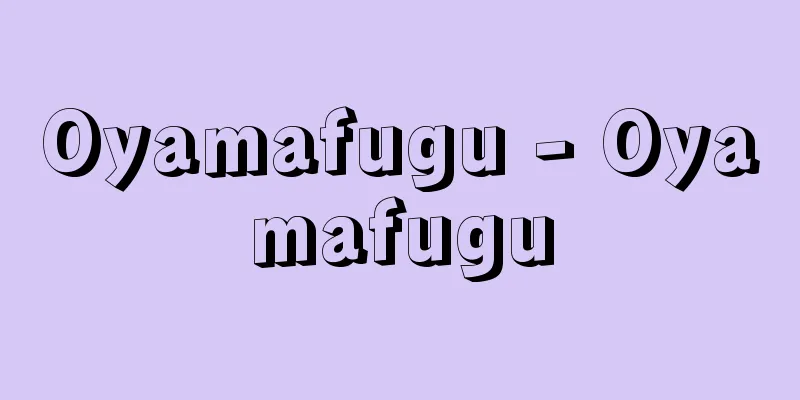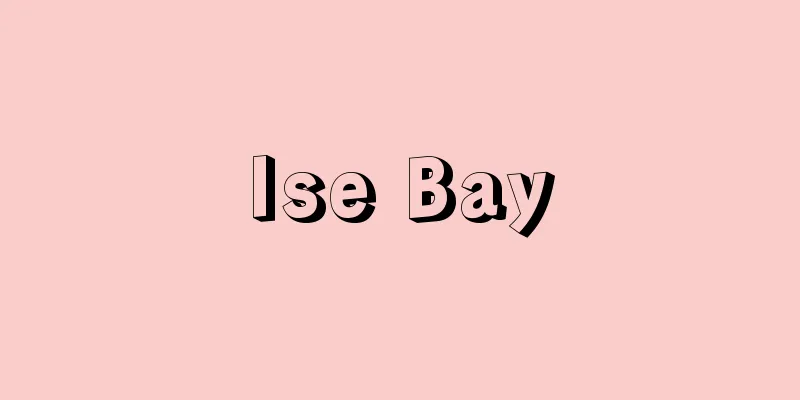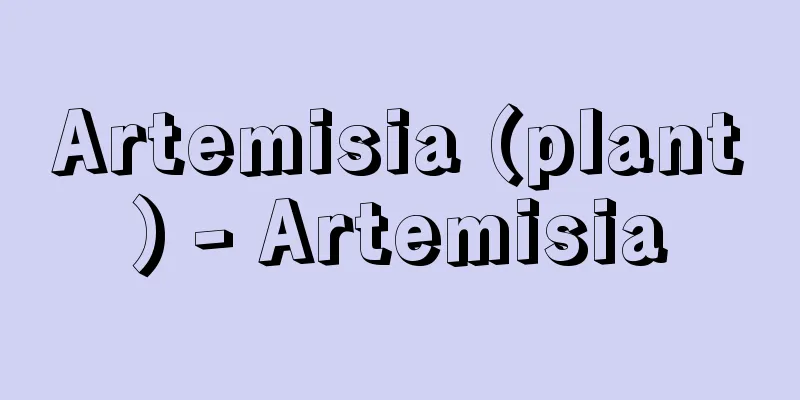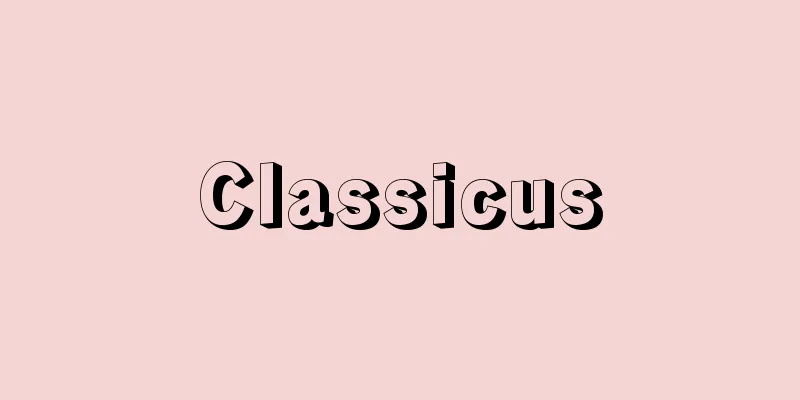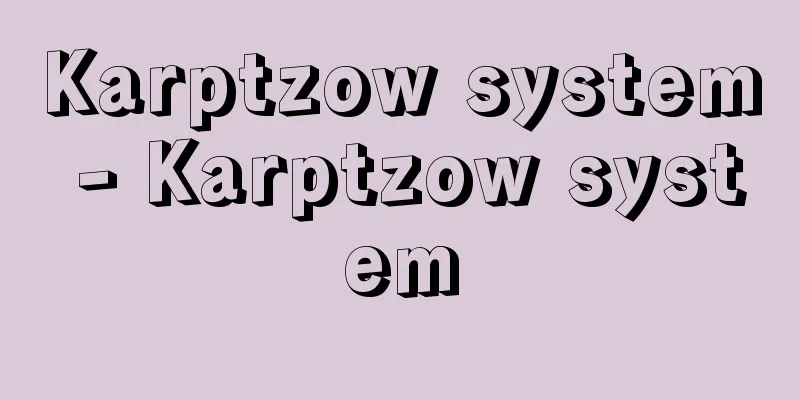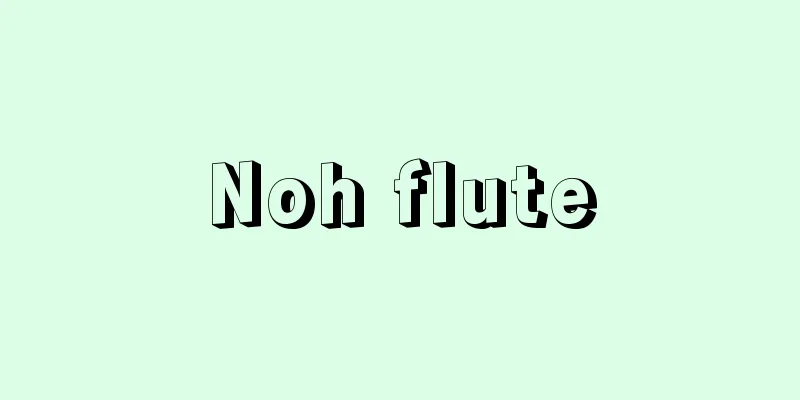Forbidden book - Kinsho

|
The term refers to the prohibition of the sale, import, possession, or reading of books by government or church order for various reasons such as maintaining public order, religious issues, or policing public morals, as well as the books that are prohibited as a result. It is a form of censorship in a broad sense. On the other hand, in many countries, both Eastern and Western, those subject to regulation have resisted by hiding books, circulating them secretly, publishing them underground, and other methods. [Kazumasa Kaneko] ChinaThe oldest example of banned books in China is the Qin dynasty. There were already examples during the Warring States period, proposed by Li Si and others, but the most well-known example was the Burning of Books in 213 BC, after unification of the country, when Shi Huang established the Law of the Books and burned all books except for Qin records, divination, medicine, and agricultural books. After that, Emperor Yang of Sui strictly banned books of divination, which had been popular since the Han dynasty and had been frequently banned by successive emperors, and searched for and burned them everywhere. During the Tang dynasty, the Laozi Transformation of the Hu Jing (Roushike Kokyo), which was declared a forgery, and the scriptures of the Three Orders of Buddhism, a sect of Buddhism, were burned, and during the Song dynasty, political books such as the Annals, the Official Histories, and the Huiyao, as well as astronomical documents, criminal law books, and military books, were banned. In the Song dynasty, the spread of printing technology made it possible to publish a large number of books, and their influence on society increased dramatically. Book bans became more frequent than ever before. In the Yuan dynasty, so-called demonic books and Taoist books such as "Taoi Lei Guan" and "Tui Bei Tu" were banned, and in the Ming dynasty, the literary scandal involving Li Zhi, who was considered a rare and dangerous thinker with anti-Confucian ideas, is famous. All of his works, both published and unpublished, were burned. Book bans were carried out throughout the ages, but the most extensive and thorough was by Emperor Qianlong of the Qing dynasty. In order to eliminate anti-Manchu ideology among the Han people, he mercilessly burned any books that he deemed detrimental to his rule, burning 538 types and 13,862 copies. During this period, he also ordered the compilation of China's largest collection of books, the "Siku Quanshu," but it is said that this was actually to collect and censor books from all over the country. In 1788 (the 53rd year of the Qianlong reign), the government published the General Catalogue of Prohibited Books, but many of the banned books listed in the catalogue had already been imported to Japan and thus escaped burning. Among the banned books were Zenki books, which were ordered to be burned together with the book and its woodblocks, and Chuki books, which were ordered to have parts corrected or deleted. In addition, novels such as Jin Ping Mei and Suikoden were banned as they were deemed to be disturbing to morals and threatening to cause social unrest, and model answers for the imperial examinations were also banned. [Kazumasa Kaneko] JapanIn 1639 (Kan'ei 16), the Edo Shogunate strictly banned Christianity and issued a national isolation order that prohibited Portuguese ships from arriving in Japan. Prior to this, in 1630, it issued a book ban order that prohibited the import of 32 types of Christian books. After that, a book inspector was appointed at the Nagasaki Kaisho and a book inspector at the Nagasaki Cathedral to inspect the books imported from China. The inspection was strict, and banned or suspicious books were either burned or shipped back depending on the level of harmfulness, and if there was even a word or a phrase about Christianity in the book, that part was erased with ink or the entire page was torn out. However, since the banned books included technical and scientific books unrelated to Christianity, such as "Kika Genbon," the eighth Shogun, Yoshimune, relaxed the ban in 1720 (Kyoho 5) and began to allow the import of these scientific and technical books. However, in 1722, the Shogunate issued a publishing law, which strengthened regulations on domestic publications, such as the formation of associations of booksellers. These policies continued until the end of the Edo period. In addition, the Edo Shogunate strictly prohibited references to the Shogunate or feudal lords in books in order to maintain public order, and strictly prohibited the publication of books that included new trends of the time, as well as the publication of erotic books in order to control public morals. From the Meiji period to the Showa period, in 1893 (Meiji 26), the Publishing Law was enacted under a censorship system, stipulating the prohibition of sales (banning) and imports. This, combined with the Peace Preservation Law of 1925 (Taisho 14), was a powerful threat, and during World War II, publishing control was implemented, including the rationing of paper and other materials. Furthermore, after the war, the American occupation policy banned all books that once contained militarist ideology, and a huge number of publications were banned for various reasons. [Kazumasa Kaneko] WesternIn 387 BC, Plato recommended the banning of Homer's Iliad and Odyssey for the reason that they misled immature readers, and in 35 AD, Roman Emperor Caligula banned the reading of the Odyssey because it promoted free thought that was dangerous to the dictatorial government of Rome. The idea of forbidden books dates back to ancient times and continued throughout ancient and medieval times. The most famous of these is the Index of Forbidden Books published by the Roman Catholic Church. Under an absolutist monarchy, anything that even slightly questioned the authority of the monarchy was naturally banned. In France, Louis XIV banned a wide range of books. Even in the United Kingdom, where freedom of thought and expression was most widely permitted after the 18th century, Jefferson's "The Rights of the British Colonies of America," published in 1774, was banned. It was only in 1960 that the complete edition of D. H. Lawrence's "Lady Chatterley's Lover" was allowed to be published in the United Kingdom. It is still fresh in our memory that Hitler burned a large number of Marxist, liberal, Jewish, and anti-Nazi books during World War II. [Text by Takeshi Toshi] The situation after World War IIWhile the trend to respect freedom of thought and expression as one of the fundamental human rights is growing, there are still many cases where it is necessary to restrict ideas that are inconvenient to the system. For this reason, in addition to simple prohibition, many countries also attempt to exert effective control by interfering with the content through prior censorship, managing materials such as paper and printing and copying equipment, and centralizing the publication and import of books. Furthermore, systems that allow only a limited number of researchers to read certain books are also widely seen. Even in the United States, one of the countries with the least restrictions, there are examples such as McCarthyism and the suppression of textbooks teaching evolution in some regions. Book banning may be one of the eternal themes of humanity. [Tetsuya Ohkawa] "History of the Pen Wars" (included in Miyatake Gaikotsu Works Collection 4, 1985, Kawade Shobo Shinsha) [References] | | | |Source: Shogakukan Encyclopedia Nipponica About Encyclopedia Nipponica Information | Legend |
|
国内の治安維持、信仰上の問題、風俗取締りなどのいろいろな理由から、政府や教会の命令によって書物の発売、輸入、所蔵、閲覧を禁止すること、またそれによって禁止された書物。広い意味の言論統制の一つ。一方、規制される側による書籍の隠匿や秘密回覧、地下出版などの手段による抵抗も、洋の東西を問わず多くの国にみられた。 [金子和正] 中国中国における禁書のもっとも古い例は秦(しん)である。すでに戦国時代、李斯(りし)などの献策による例もあるが、著名なのは統一後の紀元前213年、始皇帝が挟書律(きょうしょりつ)を定めて、秦の記録、占卜(せんぼく)、医薬、農業などの書を除くすべての書物を焼き払った焚書(ふんしょ)である。以後、隋(ずい)の煬帝(ようだい)は、漢代から流行し、歴代の皇帝がしばしば禁じていた讖緯(しんい)の書を厳禁し、四方に捜し求めて焼いた。唐代では偽書と断じられた『老子化胡経(ろうしけこきょう)』や仏教の一派であった三階教の経典が焼却され、宋(そう)代では実録、正史、会要など政治に関する書、あるいは天文書、刑法書、兵書などが禁書となった。宋代になると、印刷術の普及によって書物の大量出版が可能となり、社会への影響力も激増してくる。禁書は以前にもましてしばしば行われるようになった。元代では『太乙雷公式』『推背図』などのいわゆる妖(よう)書や道教の書が禁じられ、明(みん)代では反儒教的思想をもち希代の危険思想家とされた李贄(りし)の筆禍事件が有名である。彼の著作は既刻・未刻を問わずすべて焼却された。このように禁書は歴代にわたって行われたが、もっとも大規模かつ徹底的であったのは清(しん)朝の乾隆帝(けんりゅうてい)である。彼は漢民族の反満思想を除くために、統治に不利益と認められる書物は容赦なく焼却、その数は538種、1万3862部に及んだ。また彼はこの時期に、中国最大の叢書(そうしょ)『四庫全書』の編集を命じているが、これも実は全国各地の書物を集めて検閲するためであったともいわれる。1788年(乾隆53)には『禁書総目』を刊行したが、これに登録された禁書のなかには、すでに日本に舶載されていたため焼却を免れたものも少なくない。禁書には書物・版木ともに焼却を命ぜられた全燬(ぜんき)書、一部分の訂正削除を命ぜられた抽燬(ちゅうき)書がある。このほかに『金瓶梅(きんぺいばい)』『水滸伝(すいこでん)』などの小説が風俗惑乱、社会不安をきたすおそれのあるものとして、また科挙受験のための模範答案例のようなものも禁じられた。 [金子和正] 日本1639年(寛永16)、江戸幕府はキリスト教を厳禁し、ポルトガル船の来航を禁止する鎖国令を発布したが、それに先だつ1630年には禁書令を発布してキリスト教関係の書物32種の輸入を禁止した。以後、長崎会所に書物目利(しょもつめきき)、長崎聖堂に書物改役(あらためやく)を置いて、中国より舶載される書物の検閲をすることになった。検閲は厳しく、禁書、または疑わしい書物は、有害の程度によって焼き捨てあるいは積み戻しをし、書中に一言半句でもキリスト教に関する記事があれば、その部分を墨で消すか、一葉全部を破り取った。しかし、禁書中には『幾何原本』などキリスト教とは無関係の技術書や科学書が含まれていたので、8代将軍吉宗(よしむね)は1720年(享保5)禁制を緩和し、これら科学・技術書の輸入を認めるようになった。ただし、国内出版物に関しては1722年に出版令を布令し、本屋仲間の結成などの規制強化を行った。これらの方針は幕末まで続く。江戸幕府はこのほかに、治安維持のため著作中に将軍家・大名家などに言及することを禁じ、あるいは時代の新しい動向を盛り込んだ書物の出版、また風俗取締りのために好色本の出版を厳しく禁じた。明治から昭和にかけては、1893年(明治26)、検閲制度のもとに発売禁止(発禁)や輸入禁止を規定する出版法が施行され、1925年(大正14)の治安維持法と相まって猛威を振るい、第二次世界大戦中は紙などの資材配給を絡めた出版統制が行われた。さらに戦後はアメリカ軍の占領政策によって、かつての軍国主義思想書はすべて禁止されるなど、さまざまな理由で発禁となった出版物はおびただしい数に上る。 [金子和正] 西洋紀元前387年に、未成熟な読者を惑わすとの理由で、プラトンはホメロスの『イリアス』や『オデュッセイア』の追放を提言しており、その『オデュッセイア』を、ローマ皇帝カリグラは紀元後35年に、ローマの独裁帝政に危険な自由思想を鼓吹するものとして読ませないようにしたなどの例からみても、禁書の観念はずいぶん古くまでさかのぼり、古代、中世を通じて連綿と続いた。なかでも、ローマ・カトリック教会の公布した禁書目録は有名である。 絶対主義王政下では当然のことながら王権にすこしでも疑問を抱かせるものは禁書とされた。フランスではルイ14世が広範な書籍を禁書とした。18世紀以降でも、思想と表現の自由がもっとも大幅に認められたイギリスにおいてさえ、1774年に出版されたジェファソンの『英植民地アメリカの権利』が発禁処分に付されている。またD・H・ローレンスの完本『チャタレイ夫人の恋人』の公刊がイギリスで許されたのも1960年のことである。なお、第二次世界大戦中、ヒトラーがマルクス主義的、自由主義的、ユダヤ的、反ナチス的な書物を大量に焼き滅ぼした事実は記憶に新しい。 [寿岳文章] 第二次世界大戦後の状況思想や表現の自由が基本的人権の一つとして重んぜられる潮流が強まる一方で、体制に不都合な思想の規制を依然として必要とする例が少なくない。そのため、単純な禁止と併行して、事前の検閲による内容への干渉、紙などの資材や印刷・複写機器の管理、書籍発刊・輸入の一元化などにより実質的な統制を図る国も多い。さらに、限られた研究者などにのみ特定の書籍の閲読を許す制度も広くみられる。もっとも規制の少ない国の一つであるアメリカにおいても、マッカーシズムの例や、一部地域での進化論を教える教科書の抑圧などの例がある。禁書は人類の永遠のテーマの一つといえるかもしれない。 [大川哲也] 『『筆禍史』(『宮武外骨著作集4』所収・1985・河出書房新社)』 [参照項目] | | | |出典 小学館 日本大百科全書(ニッポニカ)日本大百科全書(ニッポニカ)について 情報 | 凡例 |
<<: Princess Jincheng (English: Princess Jincheng)
Recommend
Gouache (English spelling)
A term used in painting. Water-soluble, opaque pai...
Sputum - phlegm
A general term for secretions from the mucous mem...
National Gallery of Art, Washington
This is the national art museum in Washington, D.C...
Polymera
…The thoracic segment is made up of several separ...
brannerite
...There are many mineral species that contain ur...
Takemikazuchi no Kami - Takemikazuchi no Kami
Also written as Takemikazuchi-no-kami. A sword go...
《Jephtha》 - Yephta
...The former developed from the liturgical drama...
Arahigaki
…However, taking advantage of the loss of the pri...
butane
C 4 H 10 (58.12). CH 3 (CH 2 ) 2 CH 3 . A saturat...
Duodenal worm (duodenal worm) - Duodenal worm
Also known as hookworms. A parasitic worm belongin...
Soft tissue
Parenchyma refers to plant tissues made up of par...
Sphenopteris
…About 500 species are known worldwide (about 50 ...
Good luck - Kashin
The title of a recitation piece. The title comes f...
Dog fleas - Inunomi (English spelling) dog flea
An insect belonging to the order Siphonaptera (Cr...
Soyuz spaseniya
...The name "Decemberists" came from th...


